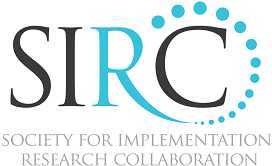ABSTRACT 4: Policy example, BMC format
Bianca Albers1, Marg Stott1, Robyn Mildon1
1Centre for Evidence and Implementation, Melbourne, Australia
Title: How policy contexts disable implementation
Correspondence: Bianca Albers (bianca.albers@cei.org.au)
Background
In 2016, the Department for Family and Community Services in New South Wales, Australia selected Multisystemic Therapy – Emerging Adults (MST-EA) as a potentially suitable intervention for clients in a leaving care program with high and complex support needs emerging from challenging behaviour, mental health problems, involvement with the criminal justice system, intellectual disabilities, and alcohol and other drug use. MST-EA was originally developed in the U.S. for young people aged 17 – 21 with a serious mental health condition and involvement in the justice system [1]. The program is an adaptation of standard MST [2] and had not been tested with a population with intellectual disabilities before. In the Australian MST-EA trial, its potential to be effective for people aged 16 – 26 with a mild to moderate disability and at high risk for poor outcomes was explored. The first year of MST-EA implementation took place in a complex policy environment that was dominated by one of the most comprehensive social reforms in Australia – the introduction of the National Disability Insurance Scheme (NDIS). Its national roll-out began in July 2016. The NDIS follows a market-style system where government funding will no longer go directly to disability service providers, but instead to the client, who can choose the providers they want. This reform created substantial barriers to the implementation of MST-EA in New South Wales.
Materials and Methods
Based on the Consolidated Framework for Implementation Research [3], a semi-structured questionnaire was developed for use with 15 key stakeholders to the MST-EA Implementation. It was administered with clinicians, managers, partner organisations, consultants and program developers to explore the perceived barriers that contributed most substantially to the lack of success in adapting, transferring and implementing this evidence- based program to the Australian context.
Results
Data are currently being collected. Data collection will finish in May, and data analysis commence in June. Data will undergo thematic analysis guided by the Consolidated Framework for Implementation Research (CFIR). Of particular interest will be to understand in what way respondents suggest addressing the challenges that were perceived as substantial barriers to MST-EA adaptation, transport and implementation.
Conclusions
Too few examples of challenged implementation projects are being documented, analysed and utilised for learning. Our understanding of complex policy contexts and how to manage them during implementation requires further development. The Australian MST-EA trial mirrors an implementation experience that is shared by many other projects initiated by government or non-government organisations and providers. It should be used to inform future implementation practice and decision-making.
References
1. Davis M, Sheidow AJ, McCart MR. Reducing recidivism and symptoms in emerging adults with serious mental health conditions and justice system involvement. J Behav Health Serv Res. 2015;42(2):172-90.
2. Henggeler SW, Schoenwald SK, Borduin CM, Rowland MD, Cunningham PB. Multisystemic therapy for antisocial behavior in children and adolescents. New York, NY: Guilford Press; 2009.
3. Damschroder LJ, Aron DC, Keith RE, Kirsh SR, Alexander JA, Lowery JC. Fostering implementation of health services research findings into practice: a consolidated framework for advancing implementation science. Implement Sci. 2009;4(1):50.
